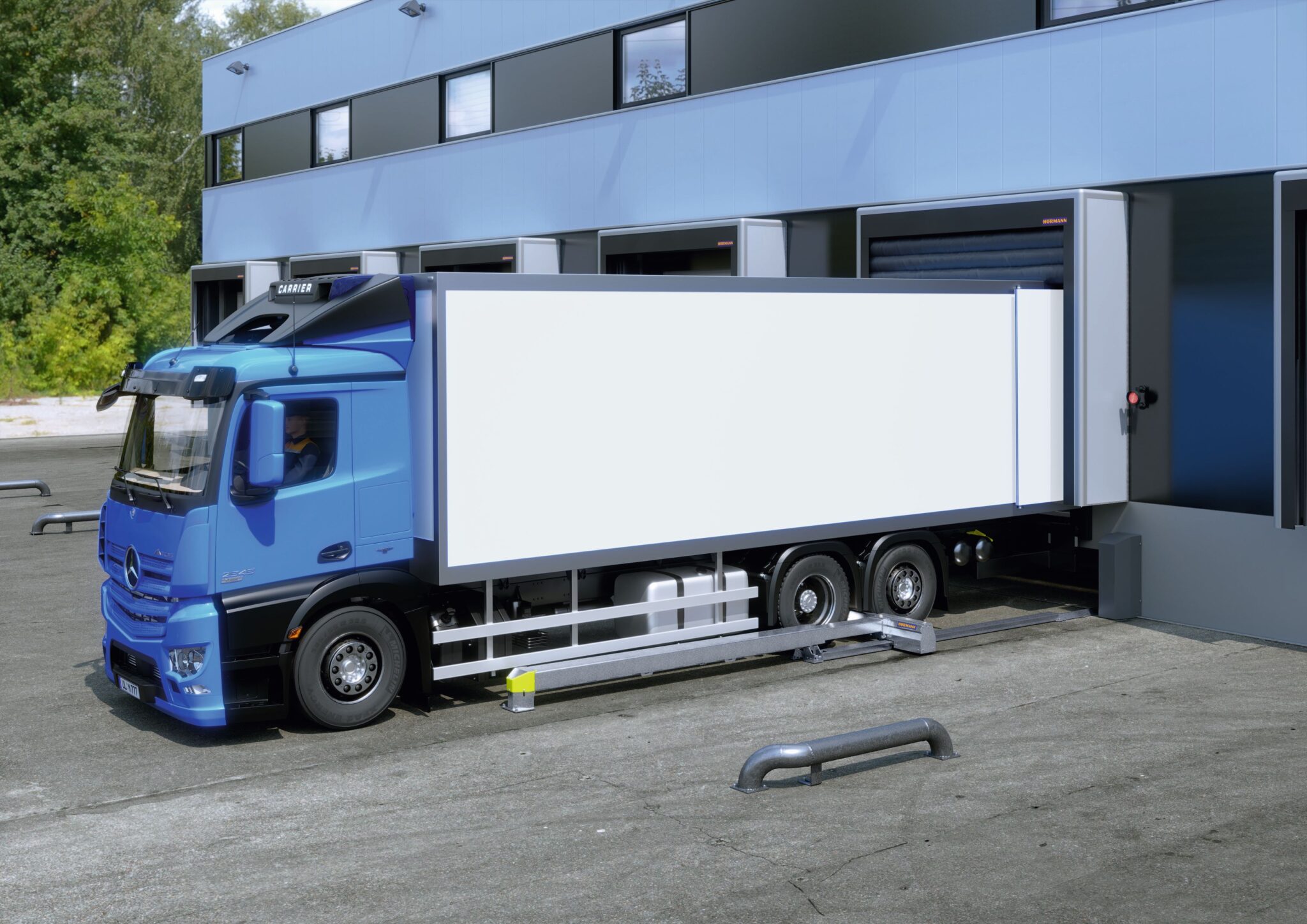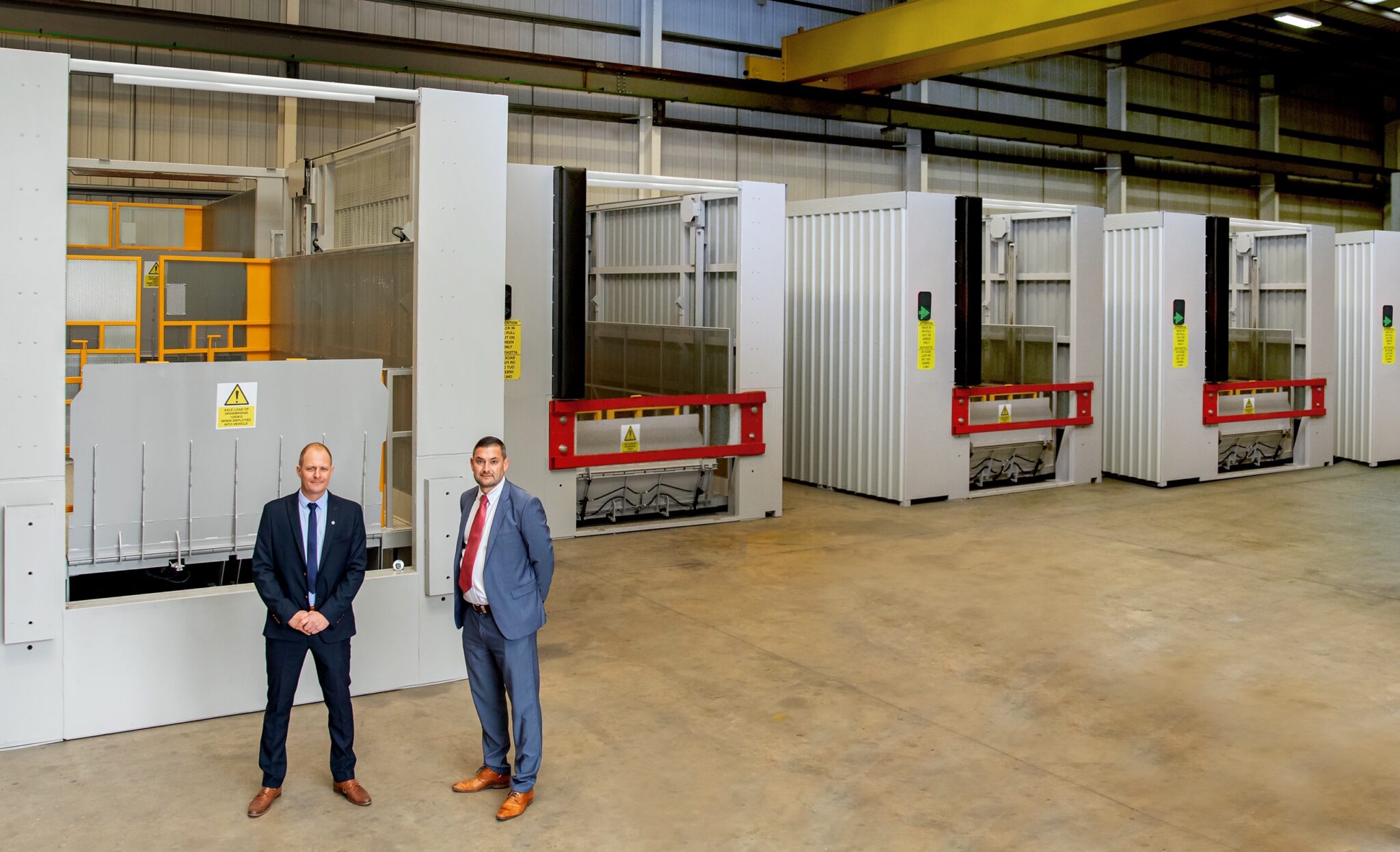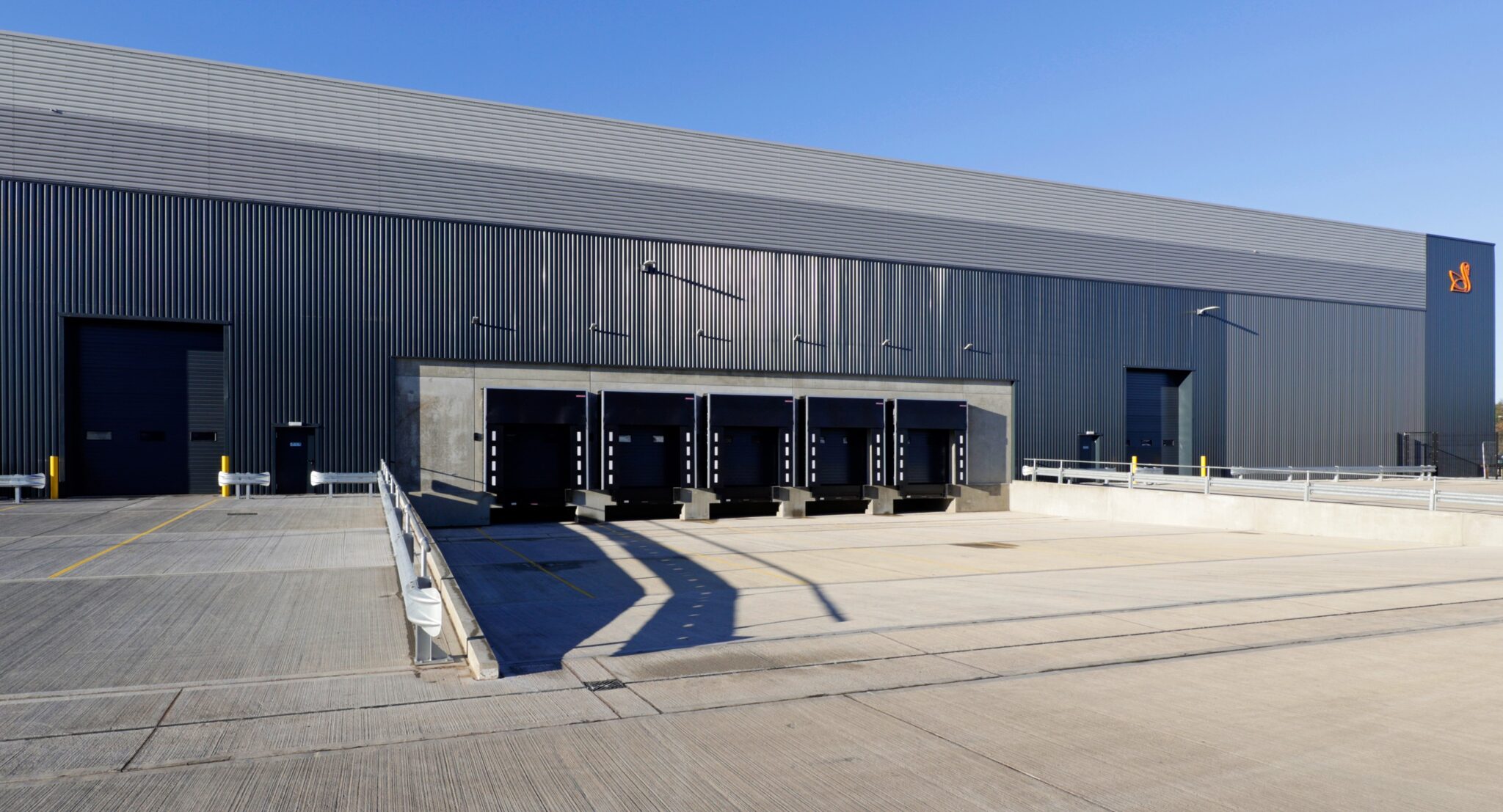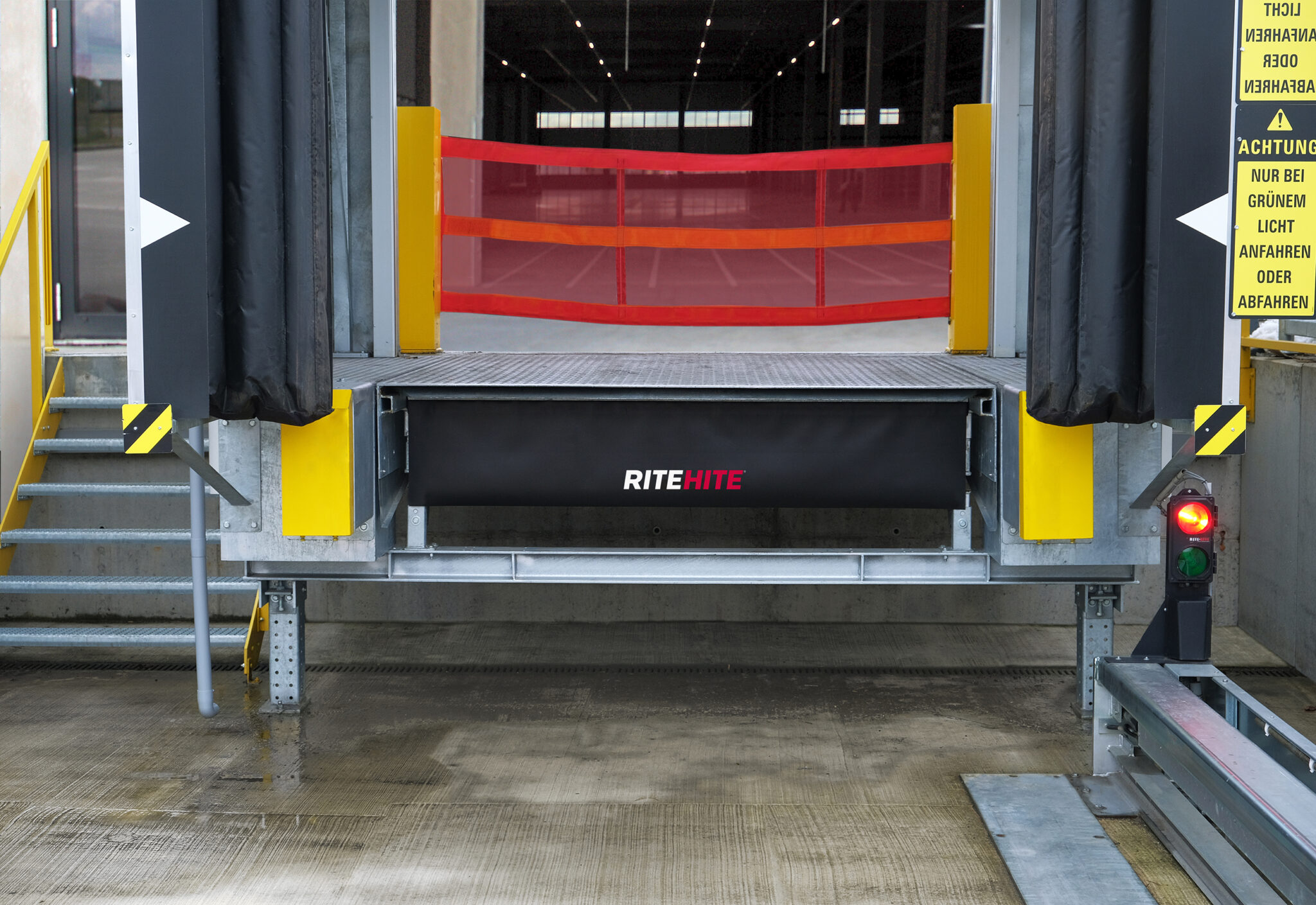As the logistics sector continues to evolve at pace, the demand for smarter, faster, and more sustainable infrastructure is growing. In response, Assa Abloy Entrance Systems has played a key role in the delivery of two state-of-the-art industrial units at Fradley Link, equipped with cutting-edge technology. Of particular note is the UK’s first major installation of the Crawford OH1142P Dual Drive sectional overhead door — a next-generation solution redefining performance standards in speed, efficiency, and sustainability.
Strategic Development in the UK’s Golden Triangle
Fradley Park, one of the UK’s most strategically located logistics hubs, continues to reinforce its position as a first-class destination for distribution and manufacturing. Located near Lichfield in Staffordshire, at the heart of the country’s Golden Triangle of logistics, this key site offers exceptional motorway connectivity and infrastructure—making it an ideal choice for major occupiers seeking sustainable and scalable warehousing solutions.
Evans Property Group has successfully completed development on the latest phase of the site, known as Fradley Link. The speculative scheme spans approximately 280,000 sq ft and includes two highly sustainable, flexible-use industrial units of 204,500 sq ft and 78,500 sq ft respectively. Both are being delivered to exacting standards, targeting BREEAM ‘Excellent’ and EPC A ratings, and are equipped with EV charging capabilities, solar-ready roofing systems, symphonic drainage, and secure cycle storage.
Loading Bay Solutions Designed to Enhance Speed
Supporting this high-specification development, ASSA ABLOY Entrance Systems was appointed to deliver a comprehensive entrance and loading bay solution in partnership with architect Kilmartin Plowman & Partners, main contractor GMI Construction Group, and developer Evans Property Group. The project represents a significant milestone for ASSA ABLOY in the UK, as it marks the first major installation of the recently launched Crawford OH1142P Dual Drive sectional overhead door — an innovation designed to deliver a whole new level of speed, efficiency, safety, and security in modern industrial environments.
High-Spec Installations Across Two Warehouses
The larger of the two buildings, at 204,500 sq ft, has been fitted with a full suite of loading bay equipment to support streamlined operations. This includes 20 standard and tall loading bays, each equipped with swing lip dock levellers, OH1142P Dual Drive doors, and mechanical dock shelters designed to accommodate a range of vehicle sizes. Complementary accessories such as dock lights, traffic control systems, and wheel guides were also installed to ensure safety and efficiency across all docking operations.

In addition, four ASSA ABLOY OH1042P level access overhead sectional doors were supplied to align with the building’s architectural palette — finished externally in RAL 7016 and internally in RAL 9002. These doors not only match the visual identity of the site but also deliver excellent thermal performance, achieving an overall U-value of 1.3 W/m²K.
The second building, at 78,500 sq ft, has been completed to a similar specification, featuring ten loading bays supported by the same combination of dock levellers, OH1142P doors, and dock shelters. Four level access OH1042P doors were also integrated, mirroring the installation in the adjacent, larger unit.
First for the Dual Drive
A standout feature of the Fradley Link development is its status as the first major UK project to incorporate the Crawford OH1142P Dual Drive sectional overhead door—ASSA ABLOY’s most advanced overhead door system to date. This next-generation solution has been designed from the ground up to meet the evolving needs of high-performance logistics environments, with a focus on energy efficiency, operational speed, and minimal maintenance.
The OH1142P Dual Drive represents a leap forward in entrance system technology. Its state-of-the-art design operates without traditional springs or cables, significantly reducing the number of moving parts and thereby cutting long-term maintenance requirements. The simplified, maintenance-friendly configuration also eliminates the need for structural preparation or additional reinforcements—saving time and space during installation and streamlining integration with modern warehouse architecture.
Engineered for speed and efficiency, the OH1142P opens and closes up to 30% faster than standard overhead doors, helping to reduce energy loss and improve internal climate control. This faster cycle time not only boosts operational productivity but also directly supports the sustainability goals of modern developments such as Fradley Link, where energy optimisation is a core performance metric.
Enhanced security is built in as standard, with automatic electric locking and remote monitoring capabilities via integrated smart technology. These features allow facilities teams to oversee and manage door operations more effectively, enhancing both safety and operational visibility across the site.
By requiring minimal structural prep and offering lower lifecycle costs through fewer components, the OH1142P Dual Drive supports a future-proof, cost-effective approach to industrial design. Its inclusion at Fradley Link signals a strong commitment to innovation from Evans Property Group and sets a new precedent for UK logistics developments.
Enhanced Safety and Sustainability at Every Bay
The dock shelters used across both units have been carefully selected to enhance energy efficiency and maintain optimal conditions during loading. Unlike sloped-roof designs that allow water run-off onto trailers, ASSA ABLOY’s flat-roof shelters incorporate integral rain channels that divert water away from the loading area—helping to protect goods and improve safety on site. The shelters accommodate a wide range of vehicle sizes and maintain consistent performance in all weather conditions.
Each loading bay also features ASSA ABLOY’s high-spec rubber dock buffers with steel face and top plate, and all wheel guides were supplied with a yellow painted finish, ensuring enhanced visibility and long-term resistance to wear and weathering.
Delivering the Future of Industrial Infrastructure
This installation reflects not just a technical achievement, but a broader alignment with the values driving the future of logistics property development—efficiency, safety, sustainability, and future-readiness. Through collaboration with Evans Property Group and the wider project team, ASSA ABLOY Entrance Systems has helped deliver a logistics hub that sets new standards in operational performance and environmental responsibility.
Fradley Link is more than a new industrial scheme — it is a model for what the next generation of distribution infrastructure can and should be. With innovation like the Crawford OH1142P Dual Drive at its core, the site is now equipped to support occupiers with the performance, reliability, and resilience required in today’s fast-moving supply chain environment.
similar news
ASSA ABLOY Entrance Systems introduces a revolution in safe and secure truck docking













